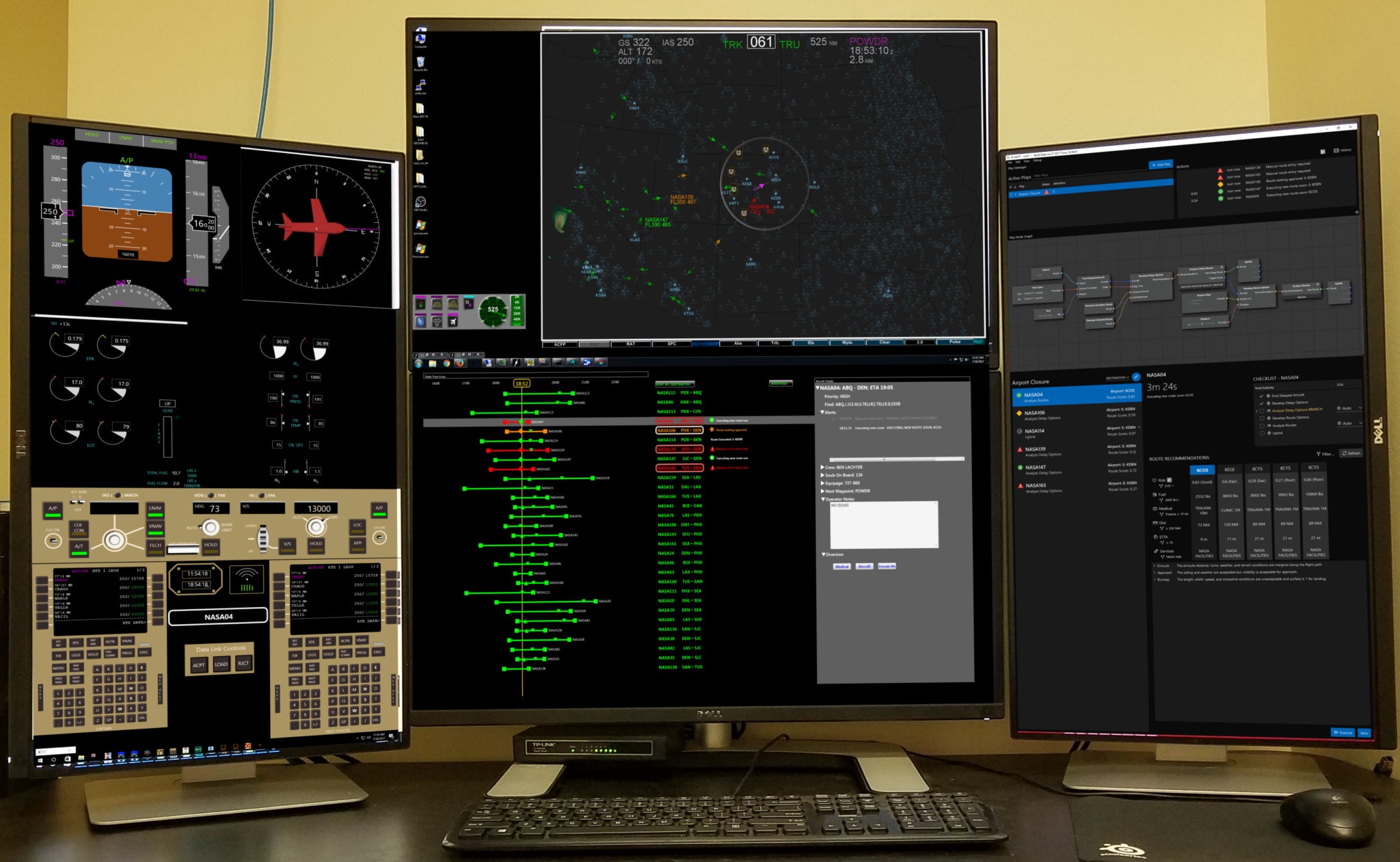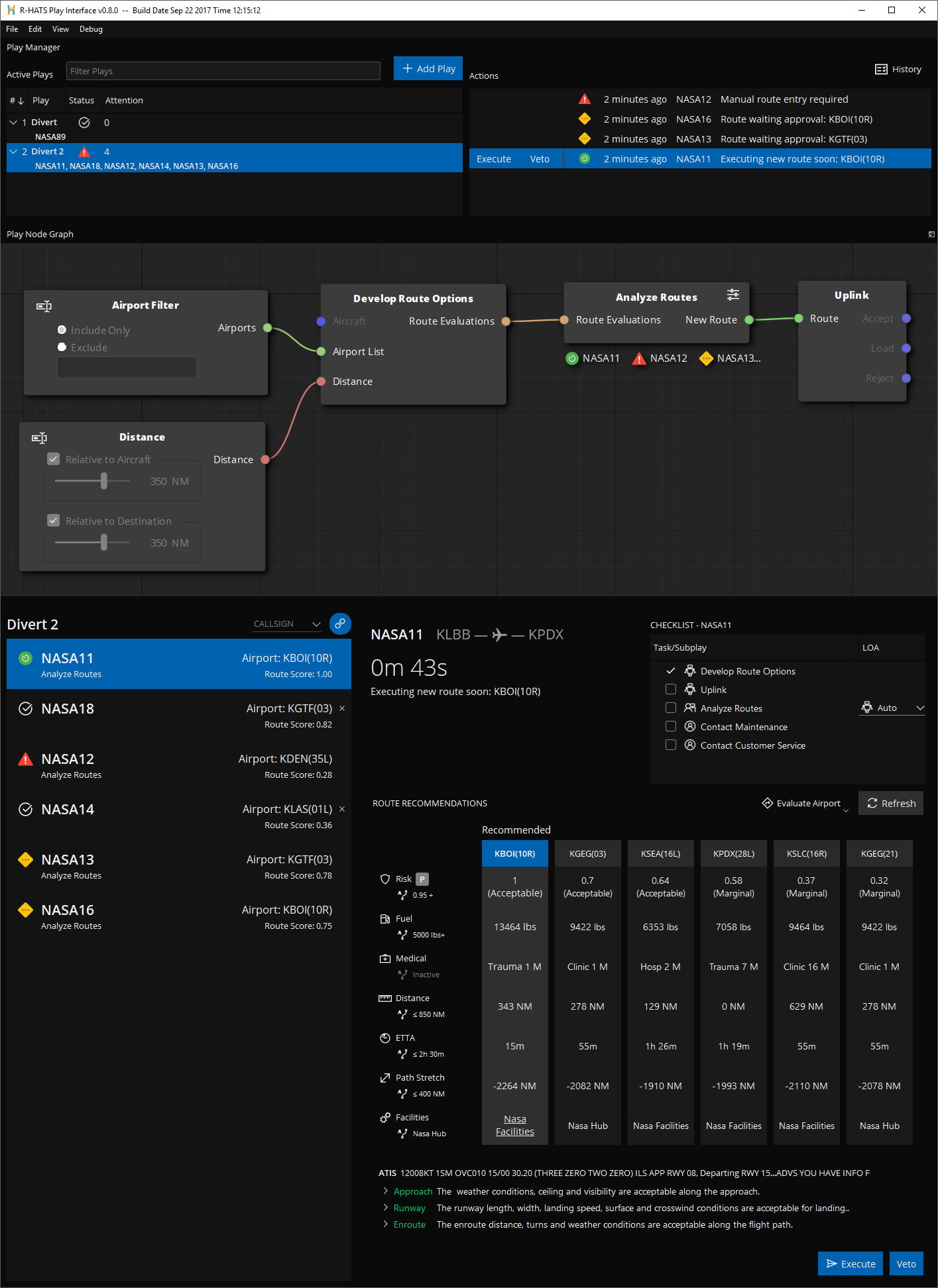Design & Development

National Aeronautics and Space Administration (NASA)
Client
Reduced Crew Operations Human-Automation Teaming System (R-HATS)

Reduced Crew Operations Human-Automation Teaming System (R-HATS) is a software agent developed for NASA by HATS Inc. to facilitate teamwork between an automation for advanced ground dispatch station and the station’s human operator. R-HATS provides for 1) the creation and autonomous execution of complex plans (called ‘Plays’), 2) the monitoring of the execution of these Plays, 3) the assignment of risk levels, and 4) determining the level of operator involvement in resolving trajectories where the currently monitored risk is deemed unacceptable. The implementation described in this User Manual will incorporate R-HATS.
This project involved the design and development of user interfaces to facilitate teamwork between an autonomous route planner and the human operator of an advanced ground dispatch station. R-HATS was developed to support NASA’s Reduced Crew Operations (RCO) project and involved designing novel visualizations and methods to allow a single operator to manage emergency situations (e.g., airport closure) for a large number of commercial aircraft (see Playbook interfaces). Designing R-HATS involved weekly collaboration with stakeholders at NASA Ames and rapid iteration/testing of interface design concepts, wireframes, user flows, and interactive prototypes.
On this project, I served both as a lead user interface/experience designer and a C++ software developer using the Qt desktop application framework.
The NASA RCO Ground Control Station. From left to right: aircraft instruments, traffic situation display (center-top), aircraft control list (center-bottom), and the R-HATS Agent.

A view of the R-HATS Agent while running an Airport Closure play for Denver International Airport.

More information is available upon request.
Relevant Publication:
Ho, N., Johnson, W., Panesar, K., Sadler, G. G., Wilson, N., & Lachter, J. (2017). Application of Human-Autonomy Teaming to an Advanced Ground Station for Reduced Crew Operations. AIAA/IEEE Digital Avionics Systems Conference Proceedings. https://doi.org/10/gf4shx